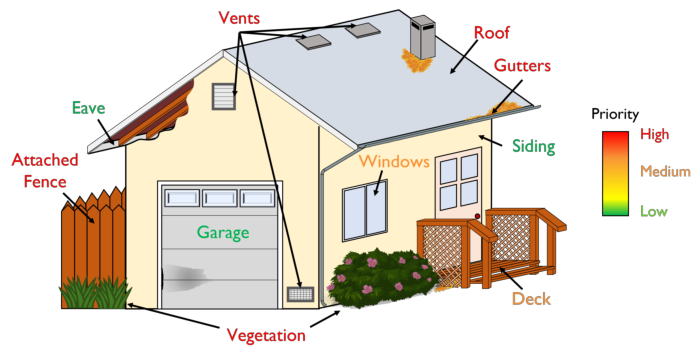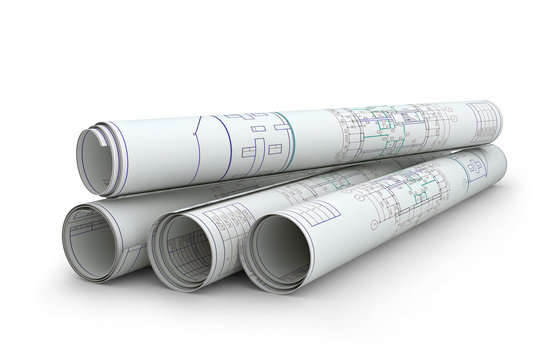Hardening Your Property Against Wildfires

Vulnerabilities and recommendations at a glance
Below is a table summarizing the vulnerabilities and recommendations of each building component. For more information, click on each component.
|
Component |
Vulnerability |
Recommendations |
|
|
Due to its large surface area, the roof is very susceptible to embers. Roofs with vertical walls or intersections present additional vulnerabilities due to potential accumulation of debris. |
Keep your roof clean by removing debris and leaves regularly. Roof edges can be protected with metal flashing. Fill in gaps between the roof covering and the sheathing. Keep your roof in good condition and repair it when necessary. |
|
|
Traditional vents are vulnerable to embers and flame contact. Embers passing through foundation, roof, and attic vents could ignite materials inside the house. |
Replace 1/4” mesh vents with 1/8” metal mesh or install ember resistant vents. Regularly check vents for blockages. Keep combustible items away from vents both inside and outside your home. |
|
|
Leaves and needles can accumulate in gutters and ignite with embers. This could directly expose the roof edges to flame contact. | Regularly check gutters and keep them clean. Installing screens may still require you to regularly clean the area since leaves could accumulate along the fascia of the roof. |
| The eave overhang can allow embers to enter through under-eave attic vents. With open-eave construction, gaps between the rafter tails and the blocking are vulnerable to ember entry. | With open-eave construction inspect eaves for gaps around rafter roof tails and blocking. Plug or caulk gaps. Remove vegetation and combustible materials below eaves. | |
|
|
Materials under and on top of a deck’s surface can ignite from embers or flame contact. Leaves and needles can accumulate in gaps between deck boards, creating ignition targets for embers.
|
Keep your deck clean by removing debris between deck boards and on the deck. Ensure that no combustible materials are stored under or on top of the deck.
|
|
|
Flame contact and radiant heat could shatter the glass (larger windows are more vulnerable). Vinyl window frames could deform with radiant heat and create gaps for ember entry. | Install or upgrade to multi-pane tempered glass windows. Remove vegetation immediately outside of the windows. For vinyl windows confirm there is a vertical or horizontal reinforcement bar. |
|
|
Debris or vegetation in contact with the fence could ignite it. Combustible fences attached to the house create a direct path for a fire. |
Replace first 5ft of attached fences with a metal gate or non-combustible materials. Remove vegetation and combustible materials in contact with the fence. |
|
Chemicals and flammable materials are often stored in a garage. Often garages are not insulated and could have door gaps where embers could enter from. |
Check your garage walls and doors for gaps. |
|
|
|
Siding is vulnerable when exposed to flames or radiant heat for extended periods. Gaps and degraded siding are also vulnerable to embers. |
Create a non combustible zone of 5ft around the house, and a vertical clearance of 6” between the ground (and other horizontal surfaces) and the start of the siding. Inspect all siding and plug or caulk gaps and joints. |




